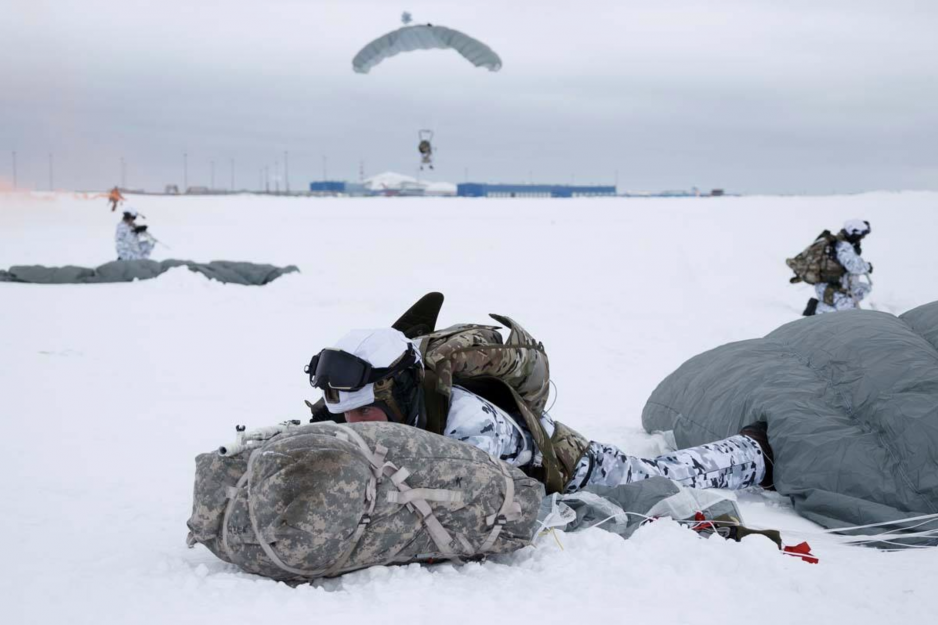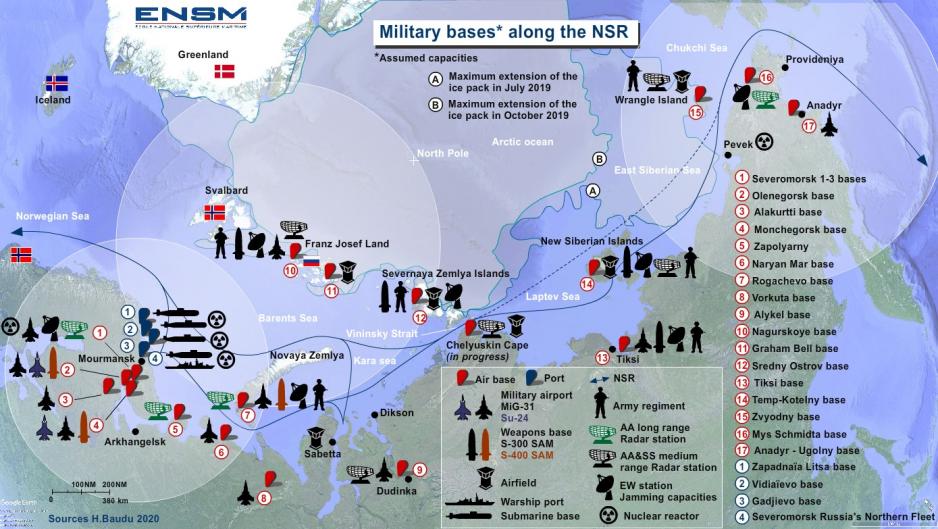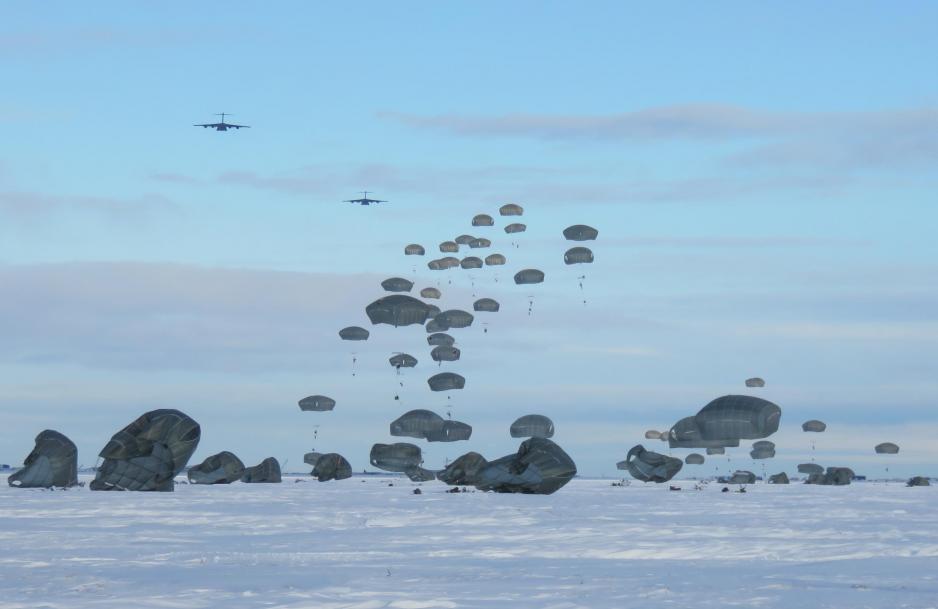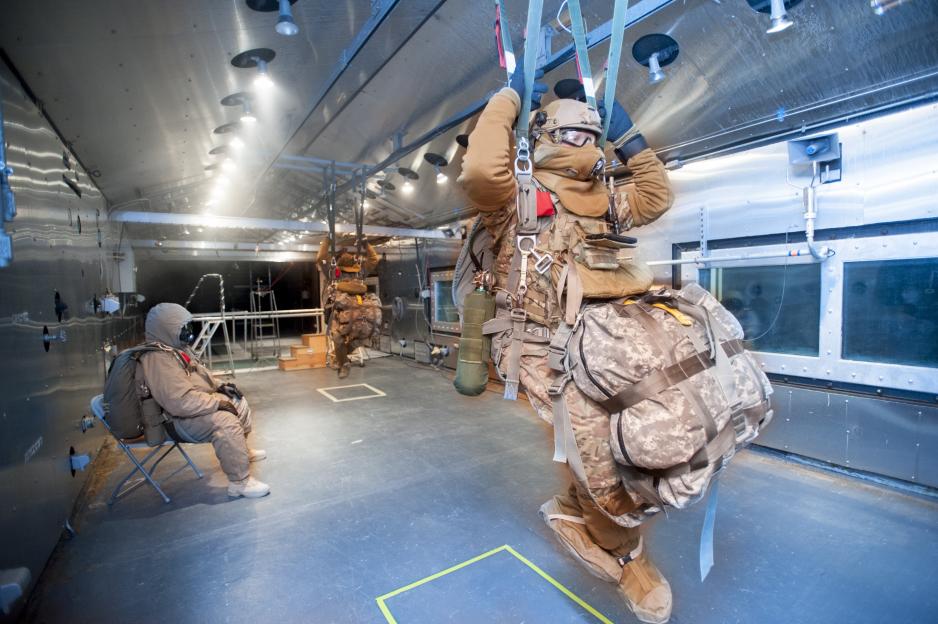Russian paratroopers perform first-ever high altitude Arctic jump
The U.S. has also added Arctic paratrooper exercises in recent years.

The Russian military continues to hone its skills required for operating in the Arctic environment. Following regular maneuvers of its Northern Fleet and the recent testing of its Kinjal hypersonic missile in the Arctic it has now deployed paratroopers from an altitude higher than Mount Everest.
The troops used a novel parachute system in combination with oxygen equipment and navigation devices when jumping from the Ilyushin Il-76 military transport aircraft. After landing the specialized unit selected and prepared a landing site for the main force, which jumped from a height of 2,000 meters.
“For the first time in world history, we conducted a group landing of personnel on special parachute systems in the Arctic conditions from a height of 10,000 meters using oxygen equipment and the subsequent completion of combat training tasks. Nobody has done this before,” explains Deputy Defense Minister Yunus-Bek Yevkurov. According to the Russian Defense Ministry, similar exercises will be held annually throughout different regions of the Arctic.
Together with a tactical group from the Northern Fleet the troops carried out reconnaissance work around Cape Nimrod using aerial drones. At the end of the three-day exercise the units reassembled at the Nagurskoye air base.
Growing Russian military activity
Nagurskoye air base is part of a growing list of newly-constructed or refurbished Russian military bases throughout the Arctic. Numerous radar installations and anti-aircraft weapons systems have been deployed in the Arctic. Earlier this month Russia activated a new anti-aircraft system at its Tiksi military base.

While Russian officials maintain that these installations serve the purpose of securing the developing Arctic trade of the Northern Sea Route, experts are skeptical.
“All these radars are calibrated to track fast airborne targets, not surface ships. Nothing that promotes the safety of maritime traffic,” explains Hervé Baudu, senior lecturer in nautical science and a member of the French Maritime Society.
Paratroopers at the North Pole
This latest exercise builds on parachuting missions conducted over the past six years. In 2014 a unit of the Airborne Forces landed on a drifting ice floe 90 kilometers from the North Pole. Fifty soldiers went through a number of training jumps on the Novosibirsk Islands before conducting the jump, which departed from Murmansk. Similar exercises were conducted in 2015 and 2016.
In total, more than 300 Russian paratroopers have jumped over the North Pole and are proficient in operating under extreme Arctic conditions. Jumping over the icy and snow-covered Arctic represents special challenges with depth perception.
U.S. also practices Arctic jumps
The United States military has conducted similar airdrop exercises in the Arctic. In 2014 U.S. Army Alaska paratroopers performed their first airborne operation 495 miles north of Fairbanks. Around 40 Arctic-equipped soldiers jumped from an Alaska National Guard C-130 during the exercise called Spartan Pegasus.
Additional drops have followed every year since. In 2017 more than 200 jumpers conducted a mission into Deadhorse.

“It’s all about demonstrating this capability to move and not just survive executing an airborne operation in the Arctic or high-altitude environment, but really, thrive in the extreme cold,” explained Lt. Col. Ethan Diven.
The exercises are not without risk and the remote location increases the complexities of extracting a soldier in case of accidents. In 2018, a U.S. paratrooper suffered a serious injury during the drop exercise and had to be flown out to an Anchorage hospital.
New equipment for high altitude
While the U.S. forces have not conducted any high altitude jumps in the Arctic, they are testing and readying equipment. The RA-1 canopy is designed for an altitude of 35,000 feet or 10.7 kilometers. Currently, missions are limited to parachute openings at a maximum of 25,000 feet due to the chute’s ability to withstand the forces of opening the canopy in the thin air at high altitude.
The RA-1 canopy is being tested in conjunction with oxygen, navigation and thermal protection, in addition to in temperatures as low as 60 degrees below zero. The new canopy was tested in a climate chamber with two retired military paratroopers suspended from the ceiling.

“It was atrociously cold,” said Nina Shopalovich, senior engineer for the Product Manager Soldier Clothing and Individual Equipment Airdrop Team. “It is so cold that any kind of moisture in the air immediately turns into frost. It is scary. It really does give you an idea of the fact that it’s very, very dangerous.”